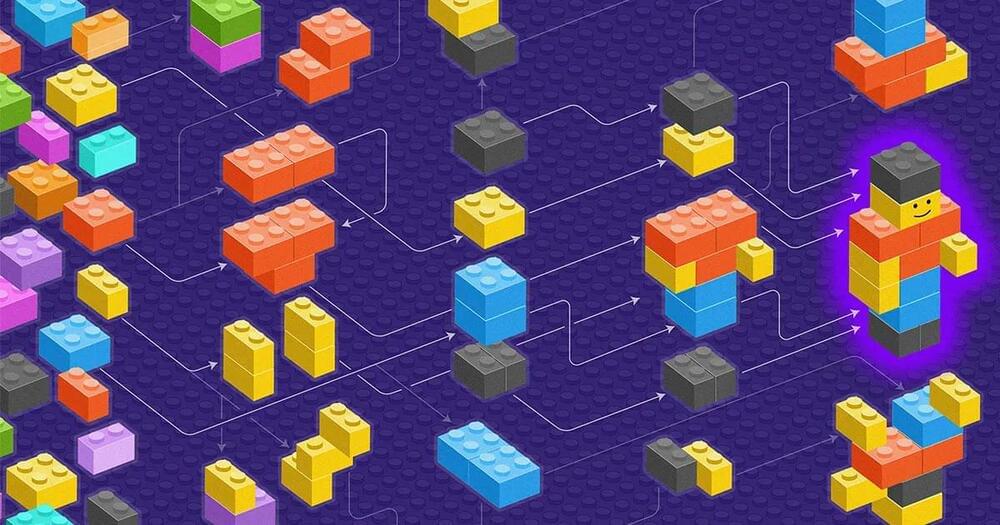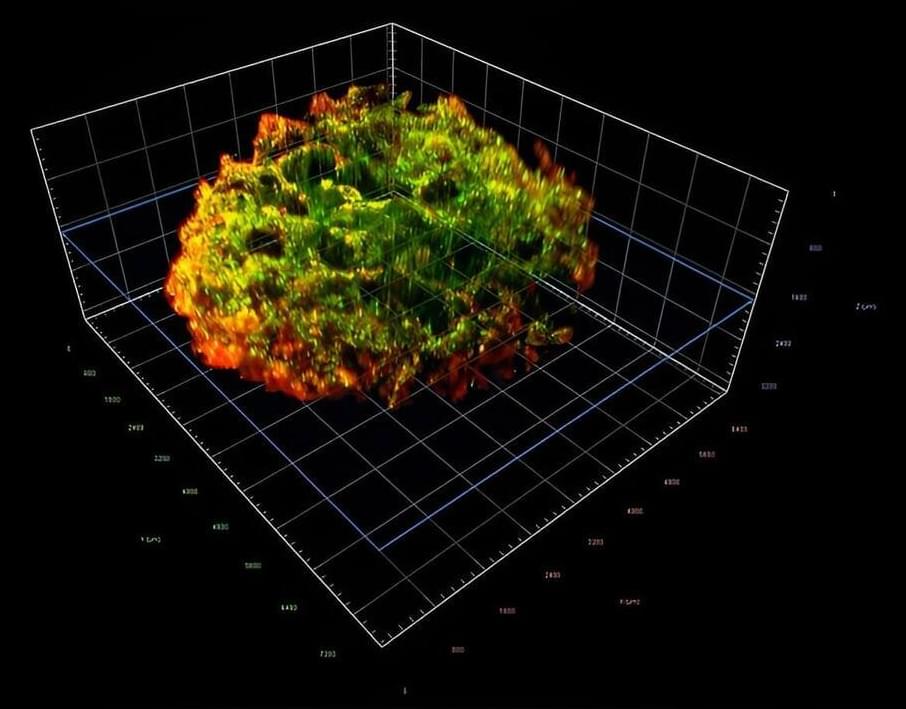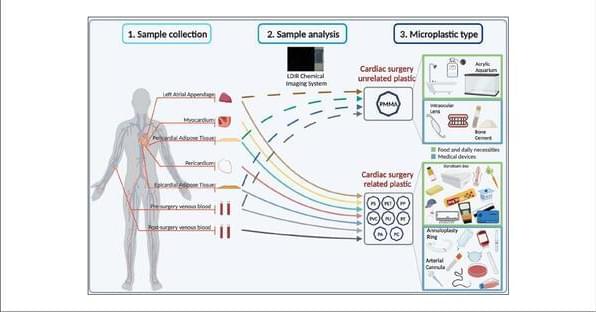If we want to understand complex constructions, such as ourselves, assembly theory says we must account for the entire history of how such entities came to be.


Meet the kitchen robot that can prepare a chicken Caesar salad, spaghetti Bolognese, teriyaki steak, chicken penne alfredo, all at the same time.
And then it does the washing up.
The Beastro is an all-Israeli invention that provides the chef in any commercial kitchen with an extra four pairs of hands.

A previously unstudied protein in the framework of osteoarthritis may be critical in the prevention of the disease, according to groundbreaking new research published in the journal Science Advances, which included work by Justin Parreno, an assistant professor at the University of Delaware.
Osteoarthritis is an irreversible, painful and debilitating condition of the joints characterized by breakdown of the cartilage that cushions the ends of the bones, called articular cartilage. It occurs most often in the hands, knees or hips and is the most common type of arthritis, affecting more than 32.5 million Americans, according to the Centers for Disease Control and Prevention.
Parreno was a doctoral student at the University of Toronto when he found that the protein called adseverin helps keep the articular cartilage healthy. This is the first time a specific protein associated with cell structure has been identified to be protective against osteoarthritis.

Tumor cells are known to be fickle sleeper agents, often lying dormant in distant tissues for years before reactivating and forming metastasis. Numerous factors have been studied to understand why the activation occurs, from cells and molecules to other components in the so-called tissue microenvironment.
Now, an interdisciplinary Cornell University team has identified a new mechanism regulating tumor growth in the skeleton, the primary site of breast cancer metastasis: mineralization of the bone matrix, a fibrous mesh of organic and inorganic components that determines the unique biochemical and biomechanical properties of our skeleton.
The team’s paper, “Bone-Matrix Mineralization Dampens Integrin-Mediated Mechanosignalling and Metastatic Progression in Breast Cancer,” published Aug. 7 in Nature Biomedical Engineering. The co-lead authors are research associate Siyoung Choi and doctoral student Matthew Whitman.

A new drone flyover of Gigafactory Texas shows that Tesla Cybertrucks are now coming out of the factory in numbers.
If Tesla sticks to its latest production timeline for the Cybertruck, we are just weeks away from the start of production and the first deliveries to employees.
We have been following closely to determine if that’s possible and now we get one of the best indications to date.

Cyrus Hodes alleges that CEO Emad Mostaque deceived him into selling his 15% stake for $100—three months before the startup reached a $1 billion valuation. His stake would be worth over $500 million now.
Mostaque convinced Hodes “that the company he had helped build was essentially worthless,” leading him to sell his shares to him in October 2021 and May 2022, according to a complaint filed in San Francisco federal court on July 13.
“But just a few months later, in August 2022, the company engaged in a seed funding round in which venture capital firms invested $101 million at a post-money valuation of $1 billion,” the complaint states. “More recently, the company has been in the marketplace seeking funding at a valuation of $4 billion.”

Microplastics have been detected in human stool, lungs, and placentas, which have direct exposure to the external environment through various body cavities, including the oral/anal cavity and uterine/vaginal cavity. Crucial data on microplastic exposure in completely enclosed human organs are still lacking. Herein, we used a laser direct infrared chemical imaging system and scanning electron microscopy to investigate whether microplastics exist in the human heart and its surrounding tissues. Microplastic specimens were collected from 15 cardiac surgery patients, including 6 pericardia, 6 epicardial adipose tissues, 11 pericardial adipose tissues, 3 myocardia, 5 left atrial appendages, and 7 pairs of pre-and postoperative venous blood samples.

A spacecraft that gave us our first multiple-perspective view of the Sun is set to flyby Earth for the first time since launch 17 years ago.
NASA’s STEREO-A spacecraft will pass between the Sun and Earth on Saturday, August 12th, with the agency exclaiming “our teenage spacecraft is visiting home.”
The twin STEREO (Solar TErrestrial RElations Observatory) spacecraft launched on October 25th, 2006 from the Cape Canaveral Air Force Station in Florida.

Alexandra is a very attentive girlfriend. “Watching CUBS tonight?” she messages her boyfriend, but when he says he’s too busy to talk, she says, “Have fun, my hero!” Alexandra is not real. She is a customizable AI girlfriend on dating site Romance. AI. As artificial intelligence seeps into seemingly every corner of the internet, the world of romance is no refuge. AI is infiltrating the dating app space – sometimes in the form of fictional partners, sometimes as advisor, trainer, ghostwriter or matchmaker. https://www.cnn.com/2023/08/13/tech/ai-dating-apps/index.html
We need a new philosophical framework for problem solving and global conflict resolutions or we will be finished as a species.
Jeffrey Sachs Interview — Resentment and Nuclear Threats.
#jeffsachs #jeffreysachs #interview.
Jeffrey Sachs is a well-known American economist, academic, and public policy analyst who has made significant contributions to the fields of sustainable development and economic development. He has held various prestigious positions throughout his career, including serving as the director of The Earth Institute at Columbia University and as a special advisor to the United Nations Secretary-General on the Millennium Development Goals. Sachs has authored numerous books and articles on topics related to economics, poverty reduction, and sustainable development.
Website: jeffsachs.org